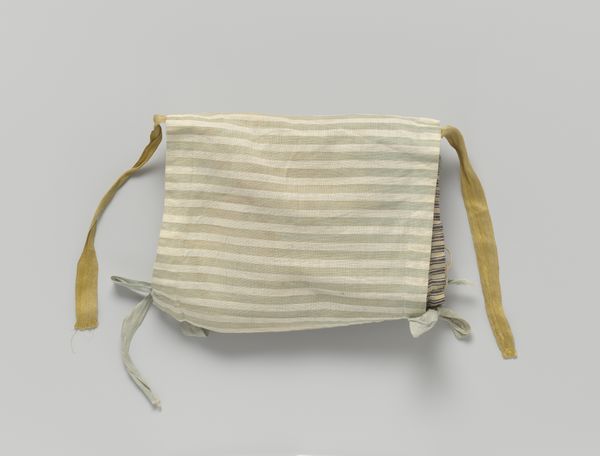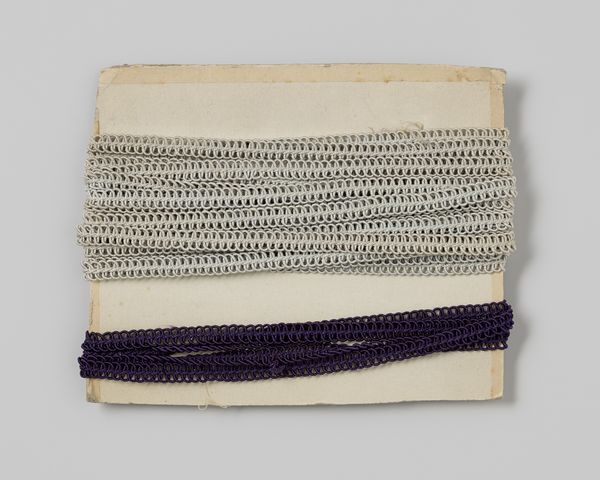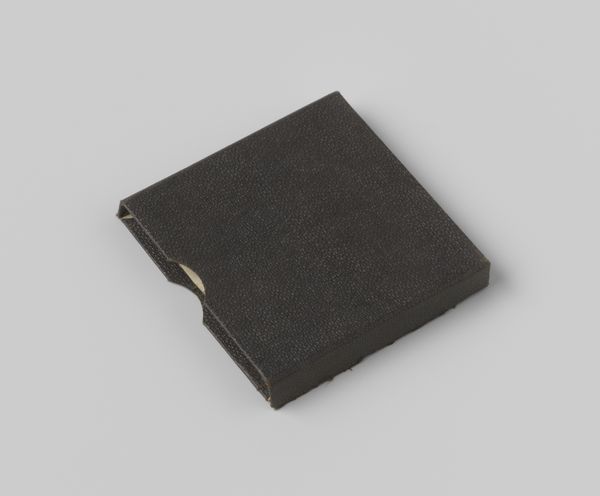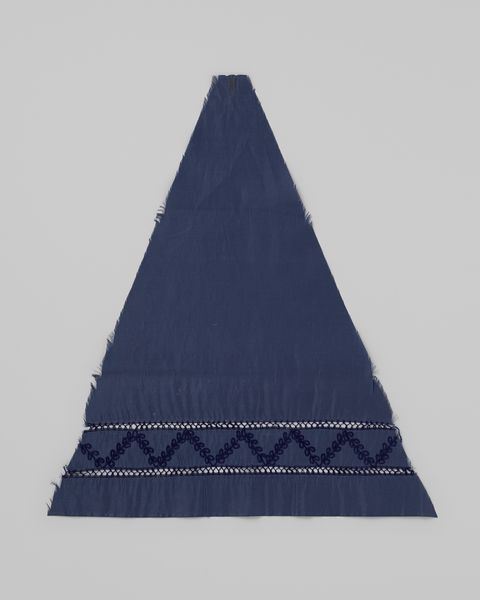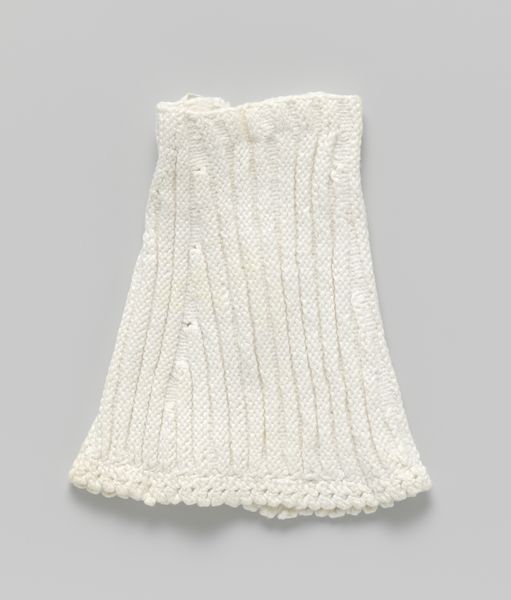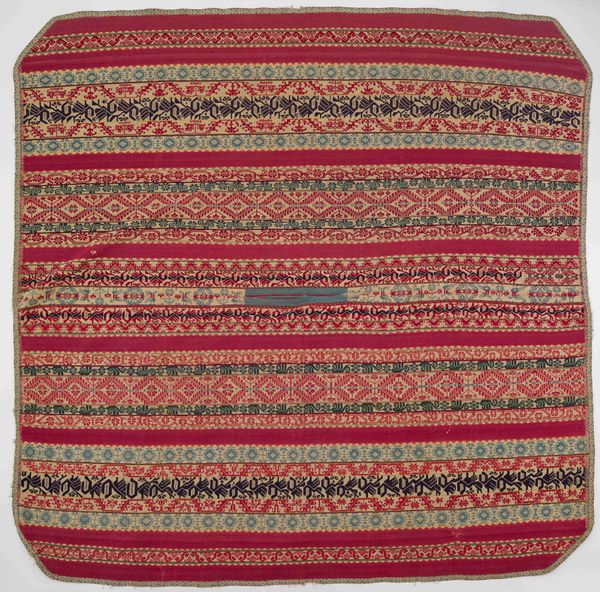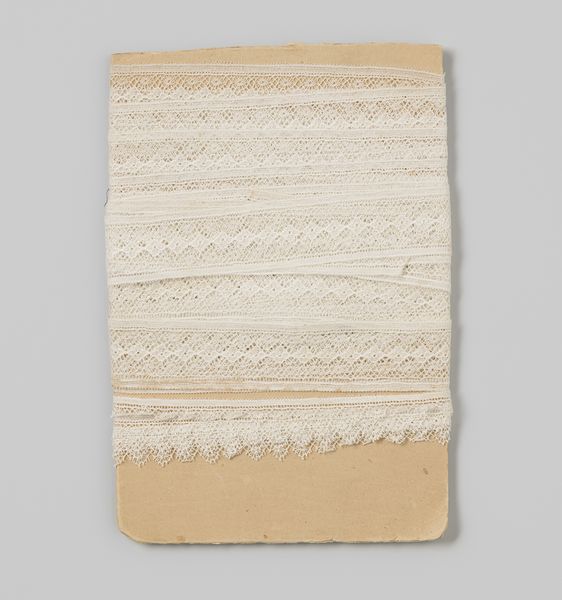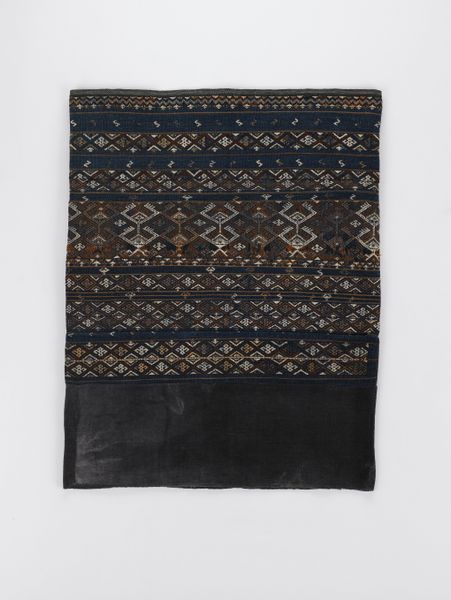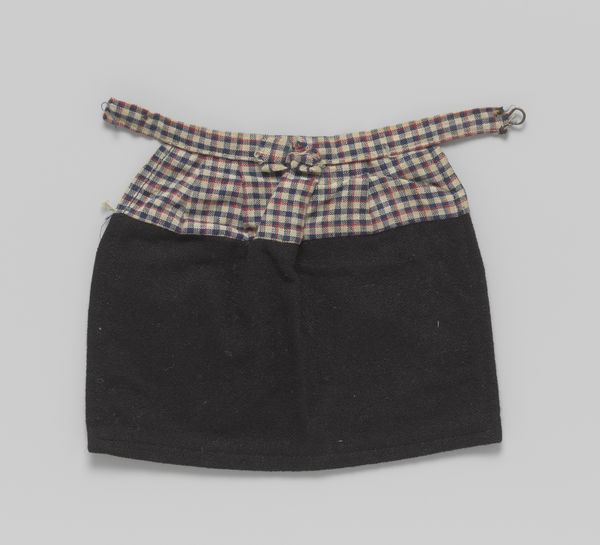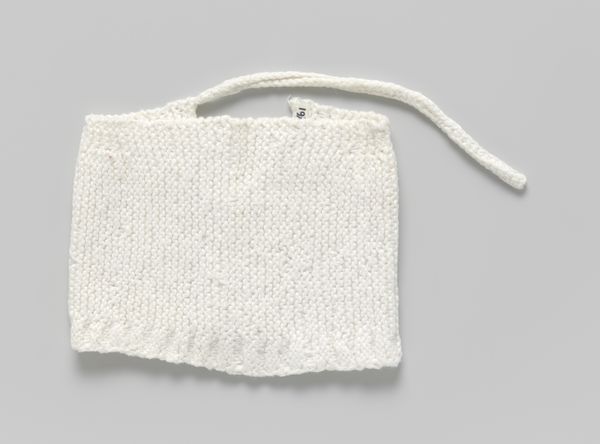
Rechthoekige zak, donkerblauw en wit gestreept c. 1836 - 1898
0:00
0:00
fibre-art, textile
#
fibre-art
#
fashion mockup
#
product fashion photography
#
fashion merchandise
#
textile
#
clothing promotion photography
#
fashion based
#
clothing photography
#
geometric
#
line
#
clothing photo
#
fashion sketch
#
retail photography
#
clothing design
Dimensions: height 28.5 cm, width 32.5 cm
Copyright: Rijks Museum: Open Domain
Editor: This is a "Rechthoekige zak, donkerblauw en wit gestreept", or Rectangular Bag, in dark blue and white stripes. It's textile, made sometime between 1836 and 1898, and attributed to Susanna Maria van Pabst Rutgers-Linse. It strikes me as simple, almost utilitarian. What stories do you think this object might tell? Curator: Utilitarian indeed! It's easy to see a striped bag and overlook the complex histories woven into its very fabric. This piece, like so much textile art, speaks to gendered labor. Who made this? Where? For what purpose? These are key questions. Consider the domestic sphere during that period, the roles assigned to women, the resources available to them. This bag transcends simple functionality; it becomes a statement about agency, a testament to resourcefulness within societal constraints. Editor: That’s fascinating. I hadn’t thought about the labor aspect so deeply. Curator: Think about the dyes used, perhaps indigo – tracing the histories of trade, colonialism, and even exploitation becomes essential. A seemingly simple stripe pattern also links this bag to ideas of naval power and perhaps resistance – sailors' uniforms had codified such patterns across global navies, while other groups historically disrupted expected dress codes. So, what was worn and who decided such regulations? Editor: I guess there’s much more to a striped bag than meets the eye. Thanks for pointing out all these interwoven contexts; I definitely have a better appreciation for it now! Curator: Precisely. And thinking about art and design through such historical frameworks reminds us to continuously question norms and challenge any assumed neutrality around objects of art and everyday life.
Comments
No comments
Be the first to comment and join the conversation on the ultimate creative platform.
